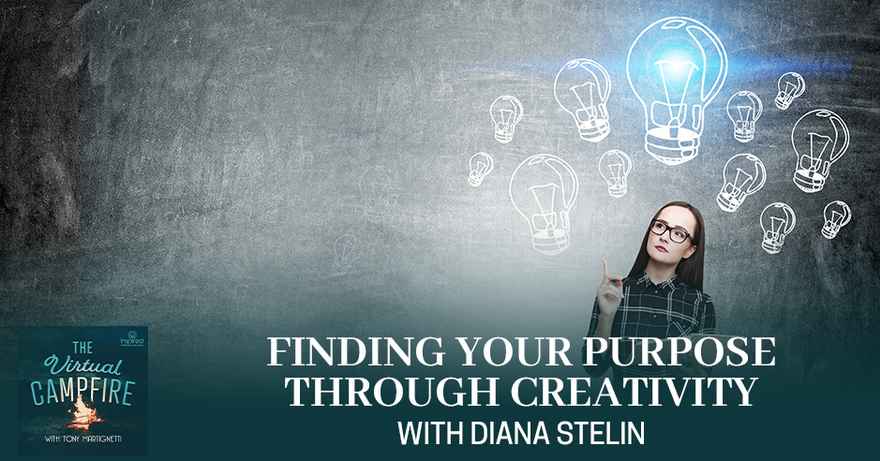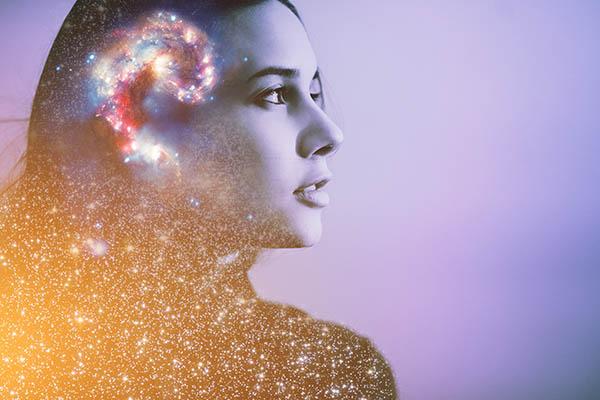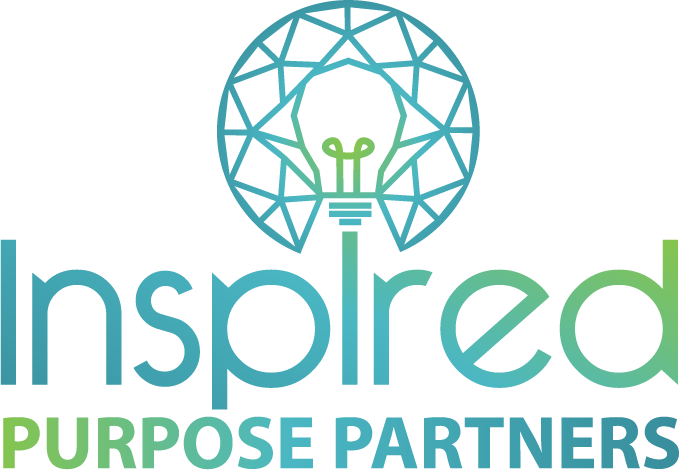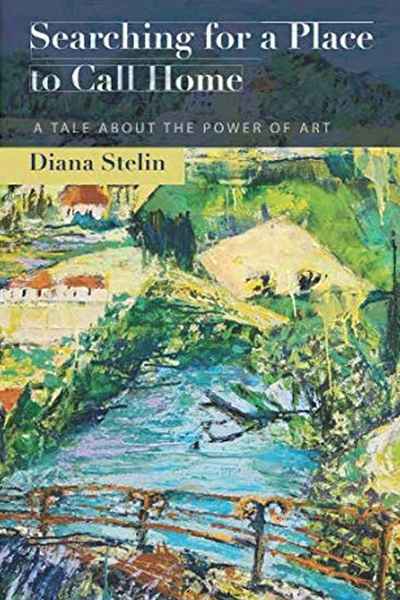Finding Your Purpose Through Creativity With Diana Stelin

Putting your creative mind into work is one way to effectively find your purpose in life. Embracing your creativity and imagination helps you open yourself to what you really love. And for our guest today, art is what makes her truly at home. Diana Stelin is the Principal CEO of Gallerista Fashion and the Founder of The Flow Method. Join Tony Martignetti as he talks to Diana about the true meaning of art and fashion to her. Learn how to balance what you love with the money you earn. Find out how everything in life, from the people you meet to the hardships you go through, has a reason. Embrace creativity today!
---
Listen to the podcast here
Finding Your Purpose Through Creativity With Diana Stelin
It is my honor to introduce you to my guest in this episode, Diana Stelin, who is the Founder of the Flow Method and recipient of the Best of Boston Award. She is on a mission to reduce burnout through creativity. She is also super creative. Diana is a published author, public speaker, proprietor of the Plein-Air Art Academy, and the CEO of Gallerista. Her artwork is displayed in private and corporate collections nationwide. She lives with her husband and three kids in Brookline, and they're all avid travelers.
---
I want to welcome you to the show, Diana.
Thank you for having me, Tony. It's amazing to continue our conversation.
Yes, the same here. I'm thrilled to dive into your story and to understand all of the things that you're up to in the world. I loved when I made the introduction to who you are. It's touching the surface, but I think there's so much that I want to dig into because you create amazing works of art in so many different modalities. I know it has to do with clothing, artwork, and also writing books. You're all over the place, but in a good way. I'm looking forward to diving in and understanding how you get started in this world of art.
Thank you. I'd love to share my story and see what would resonate with your readers.
What we do in the show is share your story through what's called flashpoints. These are points in your journey that have ignited your gifts into the world. As you're sharing your story, we'll pause along the way and see what themes are showing up and things that you want to touch upon and dig deeper. With that, I'm going to turn it over to you in a moment, and you can start wherever you like and share what you're called to share. Diana, take it away.
I'm going to start from the end. We had dinner with some of the incredible people I met over a conference called the Renaissance Weekend, which both you and I were a part of. This woman, towards the end of dinner, said, “I have to tell you this. In your signature, you had a link to your TED Talk. My mother just retired, and she was a docent at the art museum in Oklahoma. She's going through a tough time being retired and a bit depressed.”
“What the talk did make her revisit the museum and spend quite a bit of time in front of each painting. She knows where everything is by heart. It completely changed her whole outlook on life and her mood.” That was so incredibly heartwarming to hear that from someone that I don't particularly know very well and know that this message of the importance of creativity is traveling far and wide and, in one way or another, is affecting people.
Creativity can travel far and wide, affecting people in the most significant ways.
It’s such a beautiful reflection. It's a reflection that sometimes we don't know the impact that we have and how it has such a ripple effect on people around the world. That's powerful. I want to hear more about where you got started in this world of creating what you do, even the humble beginnings. Where did you come from?
The beginnings were quite humble. I was born in Moldova, which is a country that not a lot of people know because it's made up, but it's a tiny country right next to Ukraine. Unfortunately, it came to the forefront now with all that's going on in that region of the world. I have been sketching models on paper napkins since I was five. My grandpa would critique them, and it meant the world to me. We moved to New Jersey when I was thirteen. My mother, knowing my affinity for art and how I loved fashion, didn't quite know where to turn.
She found an artist who said that I needed to learn how to do everything to get into fashion school. I started taking classes. Twice a week, we would get in the car and drive to Newark into this dilapidated factory building perched on top of a highway. I felt like I entered this asylum that was so peaceful and inspiring. This was my first exposure to having the opportunity to, on the one hand, spend time with a landscape, a portrait, or still life and learn all these techniques with color theory, lines, and relationships of shapes, forms, and colors.
What it also did, and that's what I've been applying towards my business life and teaching people how to do that, is this ability to truly get in touch with your inner self and intuition. I think that was absolutely key in my development at the time. At the hardest moments of my life, I knew that it was where I could come back to. This art practice is a place where I get in touch with my heart and everyone does if they're given an opportunity.

That was my humble beginning, and when it was time to apply to colleges, I went to FIT, Fashion Institute of Technology, New York, which is where I wanted to get into. They looked at my portfolio and they laughed. They asked me one question, which was, “Do you know how to sew?” I said, “No.” They said, “You should apply to art school.” I applied to art school because I had no other choice. It was only when I turned 40 that I started getting these visions of getting back into fashion. I couldn't get them out of my head and I went for it. In addition to art and education, adding that third product to what I am all about.
I love that you share that because there's something about that, which is a lesson we all have to learn not to give up. You could be seeing yourself as, “I wasn't accepted, but I'm not giving up on what I want.” You just got to find another entryway and allow yourself to build that foundation to get there. I also want to reflect on this sense of what you said. Art is access to your heart and expression. Oftentimes, a lot of people feel, “I can't do that,” but it's about letting go of our preconceived notions of what we think we can. When we let go and let it flow, we allow ourselves access to something that is much more beautiful, which is our inner selves.
The number one comment and question that I get when I run these corporate workshops is, “I don't have a creative bone in my body. I don't know why I signed up for this. I have no idea how I'm going to do this.” I take the anti-paint night approach where you're following from this line to this line and there's nothing creative about that. They are forced out of their comfort zones. The one thing that I say to all the participants is, imagine that you're four years old again, and you just learned basic shapes. You don't need to concern yourself with anything else.
The most incredible thing that happens to people is they become those little kids whose fingers are twitching in anticipation of a new technique they're going to learn. It is so fascinating to watch because it usually happens about twenty minutes into the workshop. They have a lot more color in their faces, are more social, and are talkative. You can tell that somebody is truly in touch with that little child inside of them.
Tell me more about this journey you've been on. Even arriving at this fact, you’re like, “Now I want to get back into fashion,” what are some other moments along the way that you were challenged with? There are a lot of things you've done beyond what you've mentioned so far. What are some other flashpoints?
I think the biggest turning point for me was running a national gallery with multiple locations. We had galleries in Boston, New York, Palm Beach, and DC. I felt like I was growing career-wise and finally making money as an artist but also knew that that was not me. I am losing myself in the process, and there's so much of a chase after the money and the prestige of being in the gallery world that there is a huge part of me that I am completely ignoring.
The hardest decision of my life was to walk away and recognize that my sleepless and very stressful nights needed attention. My health and the miscarriages that I had are a sign that this is not sustainable. Also, my heart and intuition have been telling me for the longest time that I need out. Because the money was so good, it was hard to walk away.

I love what you shared because there's something about this, which is the entrepreneurial journey for many people in general, especially creative entrepreneurs. It's a sense of when you're making art for art's sake, or you're creating something because it's your passion, but then you lose out to this sense of like, “I need to make money too.” There's then this tug of war that happens and you lose yourself in the process of trying to figure it all out and then you have to come back to yourself. How do you find that balance of doing something you love in the way you love and then also ensuring that it can be a career or something that can make you money?
It’s a constant tug of war. I would have to say that it never ends because, on the one hand, exactly like you're saying, you want to create because you have this urge to create and to express everything that is happening in your life. As all humans, we want someone to share it with. You were having those moments when your ego wanted all the prestige, the fame, and the money. Your true self then says, “Is this really why we're doing this? Are you reaching people for the right reasons?”
I just came back from the Venice Biennale where I had a couple of works on exhibit for seven months, and it was a tough comeback because I know that there were over a thousand people passing through each day. Over the course of seven months, they had something like 800,000 people pass through, which was a record-breaking attendance for the Venice Biennale, in general.
I was also looking at it as an art fair where I needed to sell all of my stuff. Because that didn't happen, my ego was struggling so much because it was saying, “You spent all this energy, time and money to get that out into the world, and where's the return? Where's the ROI in this?” It was very hard to come to terms with and realize, “The ROI is the fact that all these people had a chance to view the art, and then you have to be open to the universe, and whatever comes my way, comes my way.” I'm going to keep at it but it reached its goal.
There's something about that. The value is in connections, getting people to see and exposure to the work. It's not necessarily in always having people purchasing, but it's continuing to see people see you. You see them and continue to get out there, stepping out of your comfort zone, and reflecting on what you're learning. I'm sure you're learning a lot through this process of getting out there and doing these things.
I'll share this one thing that I often share in this show, which is the old saying, “Success is where opportunity meets preparation.” It is valuable, but there's also this sense of you need to also have that preparation and connections come together. When you think about success in that terms, it's constantly out there. Who am I connecting with? Who am I allowing into my world that's going to help to build me to that place where I'm allowing myself to be seen? This success is the people I'm connecting with and I'm allowing into my world. That's where I want to come to another question for you. Who have been the people around your journey who have helped you to get to where you are?
My family plays a huge part because they could have easily said, “No, art is not a sustainable major. We're not going go that route. You're going to do something very practical to make your immigrant family proud,” and they didn't. I am incredibly grateful for that. They keep supporting me every step of the way. My sister is an incredible supporter. My husband is invaluable in terms of recognizing how important this is in all of our lives. I feel privileged to learn lessons from my kids as well in terms of what this does for them to have a mother who's an artist, an educator, a speaker, an author, and to be that role model.
In terms of connections, you never know who is going to be on your path and then cross your path again at a later point and bring you up. There are a lot of artists who came my way who I learned a lot from. I have this practice, which someone introduced me to, that I absolutely love. I have this notebook. Especially in the mornings when things seem out of focus and difficult in terms of deciding on priorities, I have this made-up board of directors.
You never know who will be on your path once, only to show up at a later point and bring you up.
On this board of directors, it's a mixture of my grandfather who passed away who was my first role model, and some business coaches that I had trained with. One was very financially based and another one was very mindset-based. Also, a couple of artists that I admire. One in terms of networking and making connections. One in terms of truly being devoted to his craft. It's a mixture of these various perspectives on my growth.
I consult with them internally and I write it all down. There's a lot to putting pen to paper. I write out what their suggestions to me would've been for this particular day and it is so incredibly grounding and purposeful to do that. I have such clarity after these meetings with Jesus. Being able to call on all the role models that you would have encountered throughout your life and having them help guide you is the key.
I love what you shared because, even in those reflections, there's gold in there that you can then tap into and use to move forward and maybe even creative ideas that you start to find that can find their way into your art, which is amazing. I want to shift gears a little bit and talk about what makes you write a book. There's one thing about painting and fashion design, but then you stepped into all these other mediums of writing and then did a TED Talk. Those are all amazing things but how did you find the courage and the inspiration to jump into writing a book? Also, share the title of the book so people know.
My first novel is a semi-biographical novel titled Searching for a Place to Call Home. It's a mixture of every time I go into the studio to paint, there's writing involved because I paint and something flows through me. At the same time, all of these thoughts and feelings need to be processed simultaneously. I've been writing blogs for years and people have been loving them because it's a combination of art, but also some of the areas that I might be struggling with as an artist and how they are reflections of my psyche.
For instance, if there is a painting where I was stuck in the center and could not see past it, that is a reflection of how potentially, in life, I might be stuck on a certain point and unable to see the forest for the trees and see the big picture. There are all these moments throughout the creative process that are mirrors of what happens to us in real life.
Your creative process is actually a mirror of what happens to you in real life.
I also wanted to walk through the life of an artist, how that comes to be, and all the tribulations and successes, and decisions that were made along the way. This book is a compilation of these almost philosophical ideas mixed in with a semi-biographical account of one's life and home. It's a spoiler, but that home that an immigrant constantly searches for, like me, realizes that it's not a geographical place. For me, it's the art practice because that is something that I can access anywhere and it is something that brings me home to my heart. That is what's important.
As a result of having all of those blogs and feeling like I wanted to put that life into context, the TED Talk was born. As I was working with more and more people and seeing that there are all these similarities in terms of what happens to them when they get into the flow, I felt that they could be taught so easily to so many more people. The TED platform is an incredible platform to pass on that message to whoever needs to receive that.
It's great that you ended with that because the whole concept of the TED Talk is ideas worth spreading. It's not getting on the platform to say, “Because I want to make money.” It's more because it's worth spreading. You do it because it's almost like it's an art form to bring that out there. People should hear this because it's going to impact their lives. When you do it for the right reasons, people hear it and say, “I needed to hear that.” This is why you do it, and it's so beautiful.
The whole arc of what you shared is amazing. I also want to reflect on the idea that home, not just for artists but also for most of us, we're all in search of something. We're all trying to find that place where we feel fulfilled, at peace, and feel that we belong. That, in a sense, is what you're tapping into. Home is the place where we feel in flow and belong. Would you agree?
For sure, and that's what people are struggling with these days, whether it's COVID, pandemic, anxiety-related, the world shifting, and geopolitical issues. I feel like we lost that sense of purpose. There are so many people seeking that out again and rethinking their choices, lives, and how they want those lives to be led. Creativity is an incredible way to tap into that. To truly understand what it is that I was brought on the Earth to do.

The most incredible thing that happened to me was, during the TED Talk, you prep for it. It took me a couple of months to get to the right wording. I did this incredible prep practice. For anybody who's going to be doing public speaking, I highly recommend it. I did three Zoom sessions that were spaced out about a month apart, and I invited all kinds of people from my network to listen in. It was fascinating because some of them were marketers, and they said, “Your whole slideshow needs to go. You need to shift out of it and use that as a branding tool.”
Some of them were listeners of a lot of TED Talks so they were great in guiding me in terms of what should come first, what should come next and what people pay attention to. One of them has a huge YouTube following, and she said, “Most of the people are going to be listening to this on YouTube so what you say in the first 30 seconds is super important. You need to grab everyone with that intro.”
One woman who I had no idea that she was even capable of this, but she did my whole acting routine, where I should stand, how I should move and how my hand gestures should look. Coming back to the point, what happened during the actual talk is it felt like it wasn't even me talking. I was simply a channel through which this information needed to get out into the world. It was such an incredible experience. I had that when I experienced true flow during a painting practice, but I had no idea that it could be experienced during a talk. That was quite something.
That's a remarkable talk. I love what you described because it gives us the inside story behind the scenes of how it all came together. Thank you so much. I'm going to shift gears a little bit and ask you a question. What have you learned about yourself on this journey that you want to share? What are the things that you've learned about how you show up along your path?
Showing up is probably the most important thing in this process because you want to show up as the future version of yourself, as someone who is incredibly comfortable and confident in her message and speaks her truth. If you step into this world feeling small and not-enoughness truly shows. That's exactly what I'm working on, being as honest as I can about what's going on in my life, all the struggles, and being as vulnerable as possible. Vulnerability is what people appreciate.
If you step into this world feeling small and not enough, it shows in everything you do.
I love that you shared that. You said it in a way that says it's not something that you've arrived at. It's something you're continuing to work on. It's like the journey continues. The beautiful thing is that you're never going to arrive at a destination. It's an ongoing journey. What else comes to mind about the things you've learned about yourself?
It is 90%, if not more than that, the inner game when you get out of that victim mentality. It’s like, “Everything is happening to me. Poor me. This isn't going right. This person screwed me over.” That's what's going to keep happening. If you truly make a decision to be the driver of your own life, things start miraculously happening for you. The universe opens up to show that everything in this life happens for your own benefit, even the struggles are meant. Every single person and occurrence in your life is meant to teach you a lesson and bring you forward on that journey.

I love how you put that. It's a constant journey. I was listening to a podcast from someone who is a psychiatrist and neuroscientist but has also been diagnosed with stage four cancer. He wanted to come on and do the episode at this particular moment because he wanted to make sure that the message of appreciating life at all of its moments is a gift.
This feeling of being grateful for every single day is so important. A lot of us are constantly hamster the wheel of to-do lists. We don't pay attention to the beauty of the first snow we got here in Boston, the change of seasons, and the little things that kids are bringing home. It’s finding beauty and being present. I'm still working on that and it's a lesson that all of us need to be working on mindfulness and being here.
There are a few new books coming out in 2023 that are tapping into the idea of awe. It’s something that we need to get some more awe in our life. We need to experience more awe, and oftentimes, we've lost sense of what that is. I'm anxious to dive deep into the science and the experience of what awe is. What you described is that sense of getting into the art of awe so thank you.
I am 100% on board with that. That's exactly in my vision board and the goal sheet that I have for myself. The number one thing that I say is that I want to be that guide that shows people the beauty of life. Also, that awe and wonder that we all need but oftentimes forget to appreciate.
Diana, I want to shift gears into our last question of the day, which is very different, but it's also something that I love because there are some great insights there. What are 1 or 2 books that have had an impact on you and why?
A book that truly shifted gears for me was Atomic Habits by James Clear. I know that's probably something that's been mentioned on this show and many shows before. It’s this idea that all of our habits form in a matter of about 30 days. If you train yourself to do something tiny every day over the course of a certain time will inevitably turn into a habit. I am incredibly proud of this one habit that is now a couple of years old for me. What I do at the end of each day is write down 3 wins and 3 gratitudes. I was brought up with a very negative, toxic scarcity-type mindset and because life in the Soviet Union wasn't easy.
My grandparents went through World War II. I understand that, but doing those wins and gratitudes at the end of each day for a couple of years completely changed me because now each day starts with me thinking, “What are my three wins going to be now?” They have to be different every day. You can't say every single day, “I am grateful for the sun and the moon.” It has to be something specific to that particular day or to something that happened.
I can't even go to sleep without doing that. Even if it's 2:00 in the morning and I am tied up, I know that something is missing if I don't do my three wins and gratitudes. The one habit I'm teaching myself now is drinking a glass of water every morning to start the day so that my water intake is on the uprise. That's shifting. I see changes there.
The second book that I read is called The Journey Home by Lee Carroll. I don't know if you've heard of it, but it's a book about someone in a coma. They are going through discovering different states of consciousness and letting go of their attachments to everything. Finally, realize that God, Spirit, or whatever you want to believe is out there within you, and all there is, is love. It was so profound.
What a great way to end. I can’t wait to read those books. I've read Atomic Habits, but The Journey Home sounds fascinating. I'll have to pick that up. Diana, I don't know where to go from here, but I am so grateful and honored to have you on this show. This has been such a fantastic episode and great conversation with you. I'm looking forward to continuing to see where you go next. Thank you so much for coming and joining us.
Thank you for having me. For any questions, feel free to get in touch. I would love to hear from your readers, see what resonated and see how I can be of further help. Thanks for having me.
You got me right to where I was going to go next. How can people get in touch with you? What's the best place to find you?
The easiest thing to do would be to head to my website, DianaStelin.com. It would have links to all the interviews and my social media handles, Facebook, Instagram, and LinkedIn. I have not ventured into Twitter or TikTok. I am trying to limit myself in terms of which channels I get close to. Somebody would probably have access to either one of those three.
You've captured everybody. That's fantastic. Diana, thank you so much again. Thanks, readers, for coming on the journey.
Important Links
- Diana Stelin
- Plein-Air Art Academy
- Gallerista
- Renaissance Weekend
- Searching for a Place to Call Home
- TED Talk - YouTube
- Atomic Habits
- The Journey Home
- Facebook - Diana Stelin
- Instagram - Diana Stelin
- LinkedIn – Diana Stelin
Love the show? Subscribe, rate, review, and share! https://www.inspiredpurposecoach.com/virtualcampfire



0 comments
Leave a comment
Please log in or register to post a comment